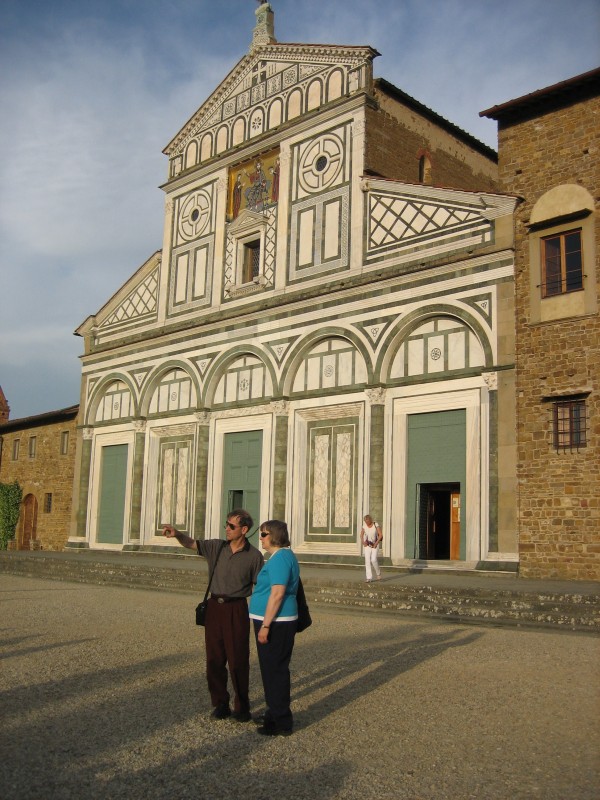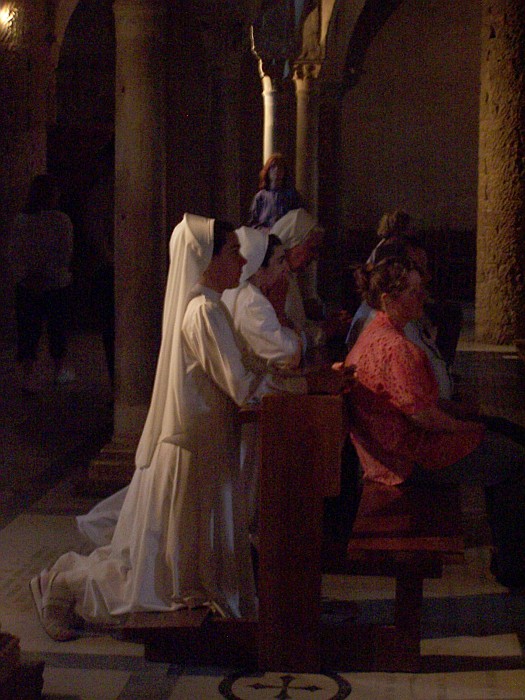(Italian pronunciation: kee-ay-zah sahn mee-nee-ah-toh)
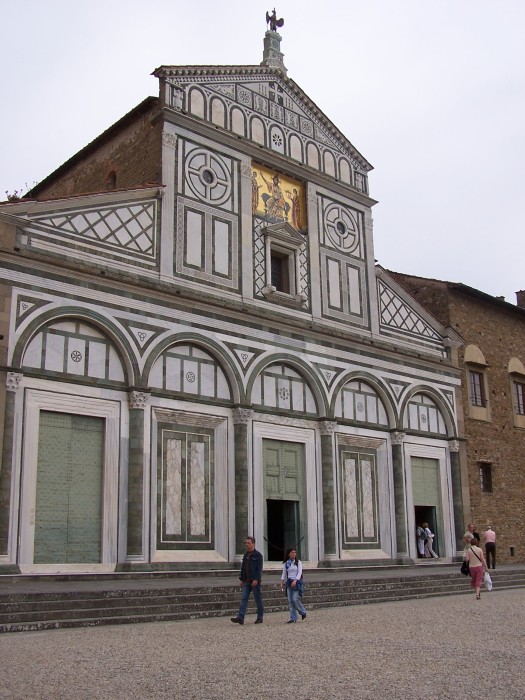

This church is a nearly perfect specimen of Romanesque architecture. It was begun in 1013, with the building continuing through the 13th century. The interior is medieval with a few hints of the Renaissance era, and its floor is covered with zodiac symbols. Art includes works by della Robbia, Michelozzo and Aretino.
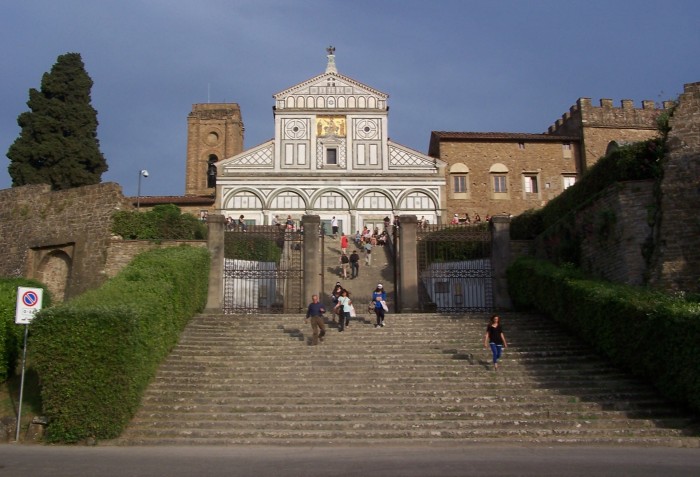
The typical facade in alternating white and green marble is decorated by fine arcading and has a 12th-century mosaic of Christ between the Madonna and St. Miniato.

In the interior, the altar preserves the bones of St. Miniato. The raised presbytery is of great beauty with its pulpit and and its choir with fine inlaid wooden choir stalls. The Sacristy is frescoed by Spinello Aretino with the sixteen stories of the legend of St. Benedict. The Chapel of St. James, or Cardinal of Portugal is decorated with five splendid roundels by Luca della Robbia. The Chapel of the Crucifix was designed by Michelozzo and decorated by Luca della Robbia. To the right of the church is the Bishop's Palace, ancient summer residence of the bishops of Florence which then became a convent, a hospital and a Jesuit house. From its front steps you have a nice view of the ochre colored town. The church figures prominently in Brian de Palma's thriller Obsession (1976, with Geneviève Bujold and Cliff Robertson).
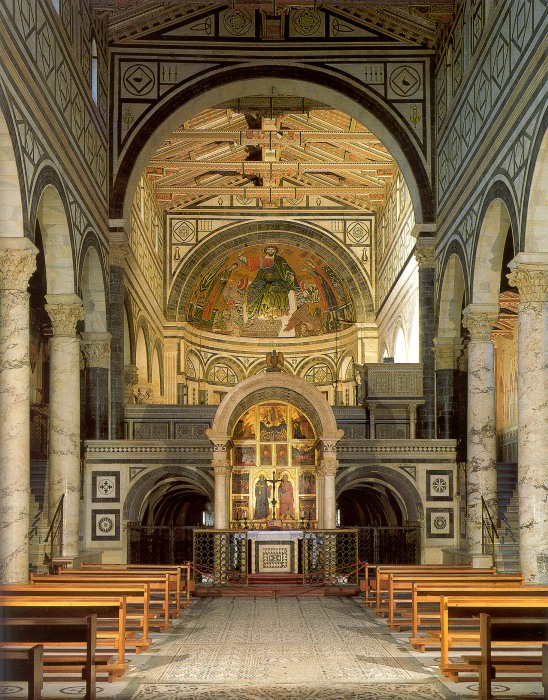
Bishop Hildebrand had the present structure built in 1018 on the site of a 4th century chapel. The lower part of the facade is decorated by fine arcading; the upper part is simpler and has a fine 12th-century mosaic of Christ between the Madonna and St. Miniato. The church, with its unfinished 15th century campanile that was damaged during the siege of Florence in 1530, the Bishop's Palace, the fortifications, and the monumental cemetery all stand at the top of a hill called Monte alle Croci, which rises up over the Piazzale Michelangelo below and over the entire city. The interior of this magnificent example of Florentine Romanesque architecture (it originally belonged to the Benedictine monks and then passed to the Olivetan friars in 1373) is tripartite with a trussed timber roof.
